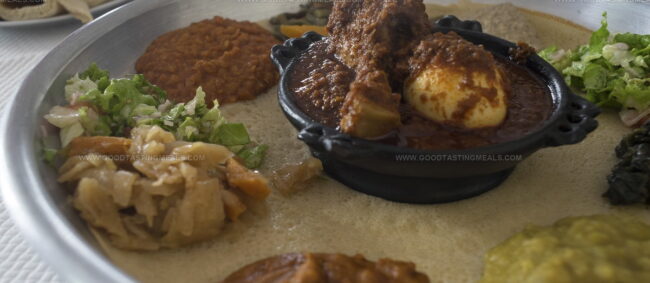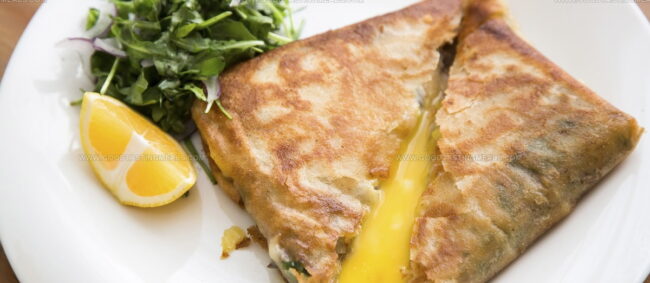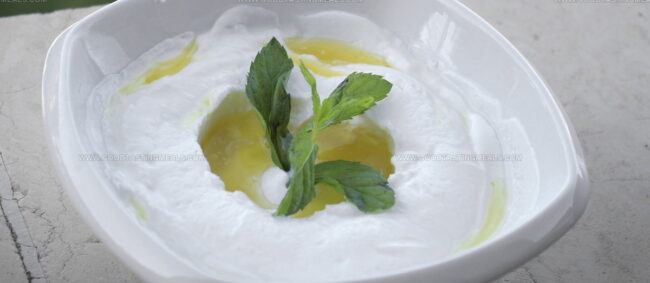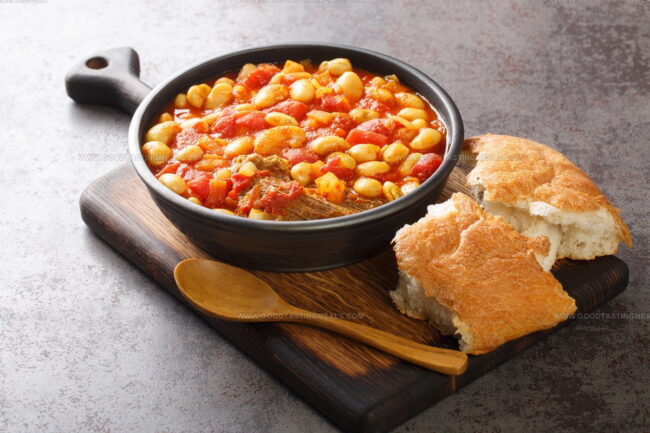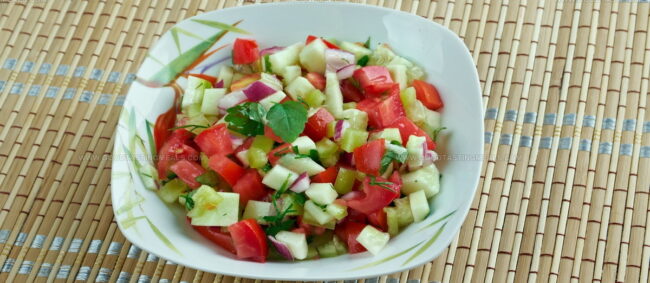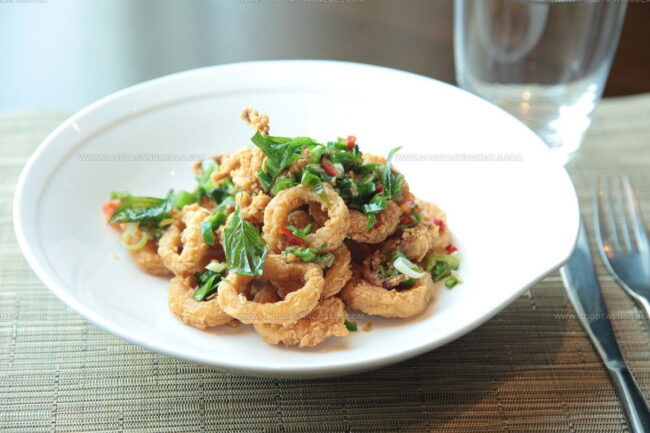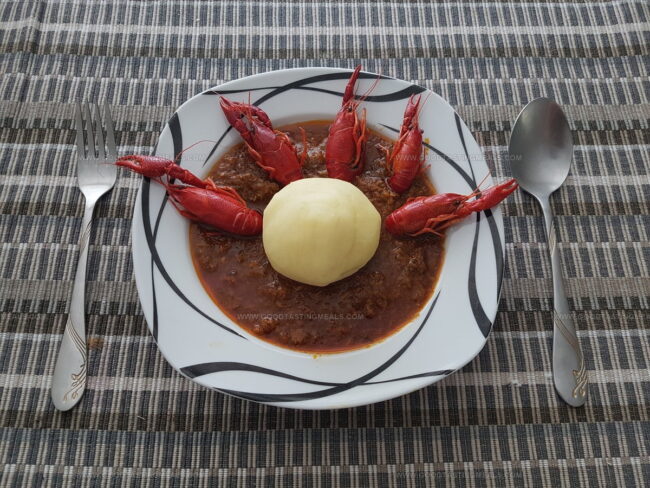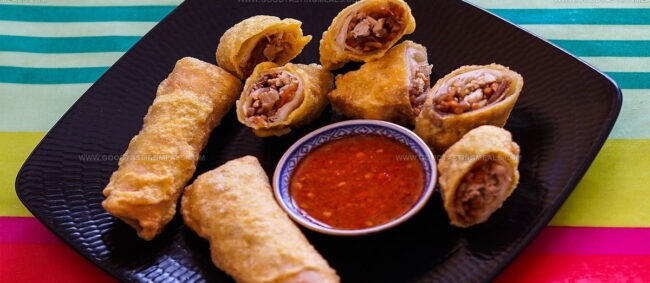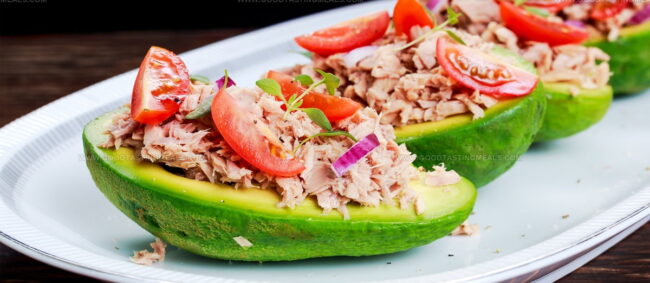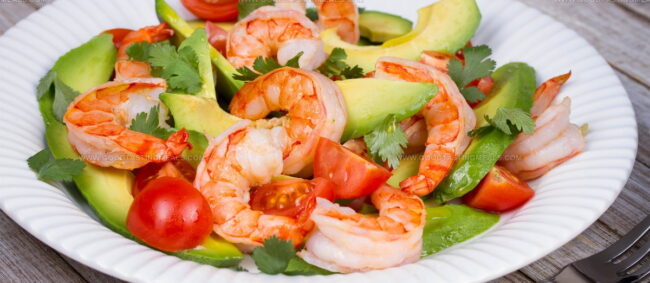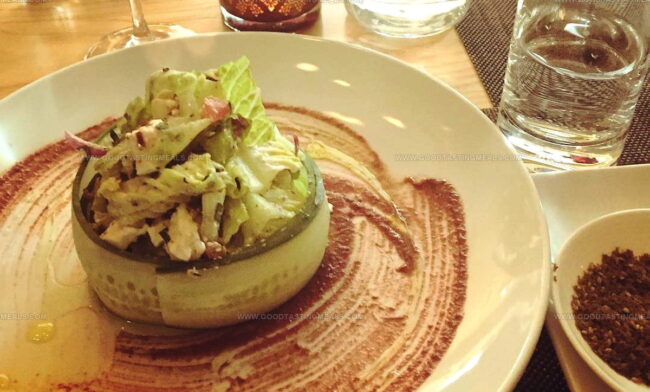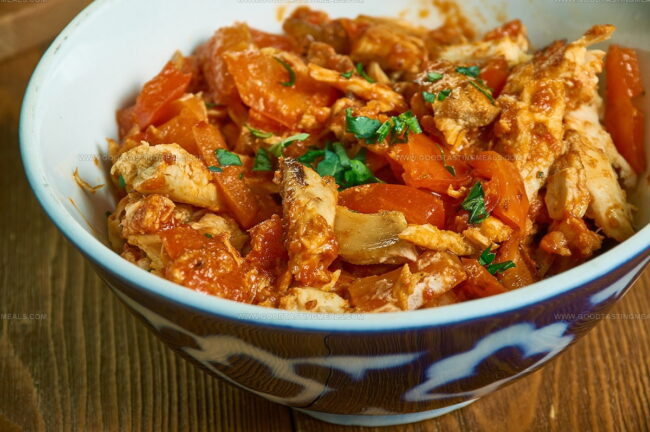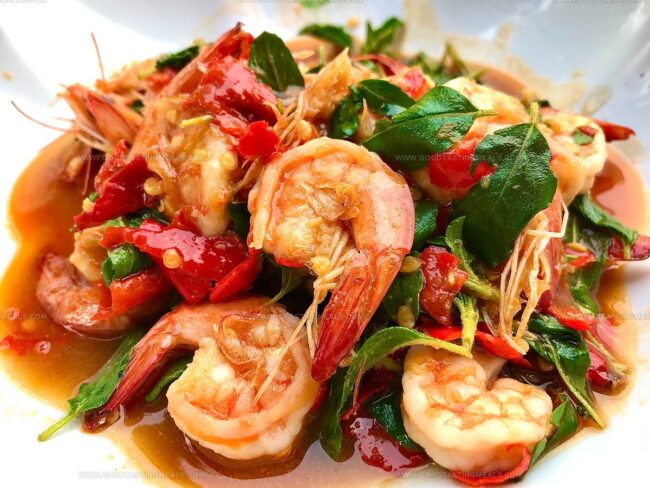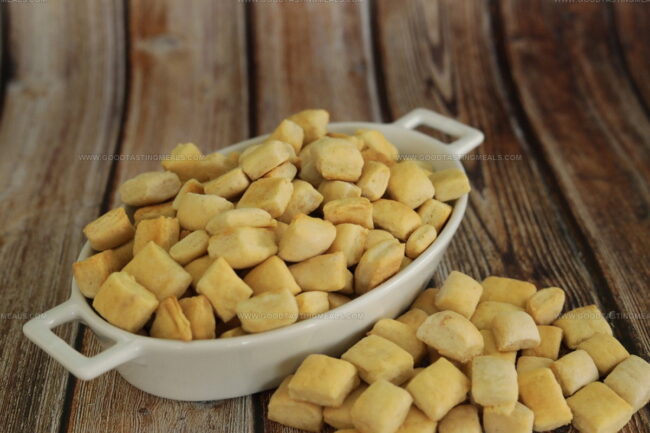30 Unforgettable African Appetizers to Brighten Your Table
African appetizers burst with vibrant flavors that dance across taste buds, transforming ordinary meals into extraordinary culinary experiences.
Cultural traditions weave through each carefully crafted bite, telling stories of community and connection.
Ingredients sourced from rich landscapes contribute unique textures and aromatic profiles that captivate food enthusiasts.
Regional techniques passed through generations elevate simple components into remarkable small plates that spark conversation and delight.
Spices play a crucial role in creating depth and complexity, turning modest preparations into memorable gastronomic moments.
Bold seasonings and innovative combinations reflect the continent's diverse culinary heritage, celebrating age-old cooking wisdom.
These appetizers represent more than just food - they are edible expressions of cultural identity and shared experiences.
Prepare to journey through 30 legendary African appetizers that will tantalize your senses:
Legendary African Appetizers for Adventurous Palates
Africa’s starter plates are full of bold colors and vibrant spices. Enjoy fritters, grilled treats, and finger foods designed for lively gatherings and family feasts.
Beyaynetu
Beyaynetu is a vibrant Ethiopian mixed platter served atop injera flatbread, offering diners a feast of diverse flavors and textures.
Ethiopian restaurants showcase their best dishes through this colorful assortment of meat and vegetable preparations.
Meat stews, shiro, pureed red lentils in berbere sauce, yellow peas, and spiced vegetables like collard greens, cabbage, carrots, and potatoes create a rich culinary landscape.
Diners can enjoy vegetarian versions called yetsom beyaynetu, which exclude meat entirely.
Small portions of each dish allow you to sample multiple flavors in one meal.
Traditional Ethiopian dining encourages communal eating, with everyone sharing from the same platter.
Tej, a sweet honey wine, perfectly complements the complex spices and robust flavors of beyaynetu.
Restaurants customize their platters, ensuring a unique experience with each serving.
Maakouda
Maakouda are crispy potato fritters that dominate street food scenes across North Africa with their golden-brown exterior and soft, spiced potato interior.
Morocco, Algeria, and Tunisia claim these deep-fried disks as regional staples made from boiled and mashed potatoes mixed with parsley, garlic, flour, salt, and pepper.
Skilled home cooks shape the potato mixture into small rounds before frying them in hot oil until they reach a perfect crunch.
Street vendors often serve maakouda in long sandwich rolls accompanied by zesty harissa, fresh coriander, and tangy lemon juice.
Simple variations include stuffing the fritters with tuna, meat, or occasionally cheese.
Families enjoy these fritters as appetizers or side dishes during casual meals.
North African street food culture embraces maakouda as a quick, satisfying snack.
Regional spice blends and cooking techniques give each version unique flavor profiles.
Mechouia Salad
Mechouia is a robust Tunisian salad bursting with smoky grilled vegetables that capture North African culinary traditions.
Summer-ripe tomatoes, onions, peppers, and garlic are charred until slightly blackened and chopped into rustic pieces.
Olive oil and warm spices like caraway transform the simple ingredients into a complex dish with deep Mediterranean flavors.
Traditional presentations include garnishing the salad with hard-boiled eggs, briny olives, or flaky tuna.
Tunisian restaurants frequently serve mechouia as part of an appetizer spread alongside crusty bread or baguette slices.
Its versatile nature allows it to be enjoyed as a standalone salad or accompaniment to main courses.
Regional variations might include subtle differences in spice blends or additional vegetable ingredients.
Hummus
Hummus is a creamy Middle Eastern spread celebrated globally for its nutrient-rich composition and tangy flavor profile.
Originating in 13th-century Egypt, this beige-colored dip blends mashed chickpeas with tahini, lemon juice, and garlic into a smooth texture.
Olive oil typically garnishes the top, enhancing its visual and taste appeal.
You can enjoy hummus as a versatile accompaniment with fresh vegetables or as a savory filling inside flatbreads like pita.
Its protein-packed ingredients make it a healthy snack choice for many cultures.
Mediterranean and Middle Eastern cuisines particularly embrace this simple yet flavorful spread.
Restaurants and home kitchens worldwide now feature hummus as a popular appetizer.
Health-conscious individuals appreciate its nutritional benefits and delicious taste.
Briouat
Briouats are crispy Moroccan pastries bursting with savory fillings and cultural significance in North African cuisine.
Moroccan families traditionally prepare these delicate pastries using thin warqa or phyllo dough wrapped around seasoned meats like chicken or lamb.
Stuffed with spiced ingredients, briouats transform simple ingredients into elegant bite-sized appetizers.
Small triangular or cylindrical shapes characterize their distinctive presentation.
Herbs and spices add complex flavor profiles to the crispy exterior.
Fried or baked versions provide versatile cooking methods.
Ramadan celebrations frequently feature these pastries as special treats.
Mediterranean culinary traditions deeply influence their preparation and style.
Brik
Tunisian brik are crispy pastry parcels bursting with flavor and culinary tradition from North Africa.
Thin malsouqa or phyllo dough creates delicate layers that crunch when fried or baked to golden perfection.
Tuna serves as the most popular filling, complemented by zesty spices like cilantro, chilis, and coriander seeds.
Skilled cooks add a raw egg inside the pocket, which partially cooks within the flaky pastry during preparation.
Regional variations include different protein fillings like meat or seafood.
Spice combinations change based on family recipes and local preferences.
Mediterranean influences shine through in each bite of these compact, portable treats.
Tunisian households often serve brik as a quick appetizer or light meal.
Falafel
Falafel are crispy, golden-brown chickpea fritters originating from Middle Eastern cuisine with deep roots in Egypt and Israel.
Street vendors in 1950s Israel popularized these protein-packed morsels as a portable street food, transforming them into a global culinary phenomenon.
Egyptian versions traditionally use fava beans, while Israeli recipes rely on chickpeas, both seasoned with aromatic spices like parsley, coriander, and cumin.
Authentic preparation involves grinding legumes with herbs, forming small balls, and deep-frying until perfectly crunchy.
Served inside warm pita or lafa flatbread, falafel becomes a complete meal when topped with fresh vegetables and complemented by creamy sauces like hummus, tahini, or garlic yogurt.
Yemenite immigrants played a significant role in spreading falafel's popularity across Israel and beyond.
Regional variations showcase the dish's adaptability and cultural significance throughout Middle Eastern countries.
Labneh
Labneh is a luxurious Middle Eastern strained yogurt cheese with a signature creamy consistency and subtle saltiness.
Produced by straining plain full-fat yogurt mixed with salt for twelve to twenty-four hours, this versatile dairy product transforms simple yogurt into a thick, spreadable delicacy.
Yogurt whey separates during the straining process, creating a firm cheese-like texture that ranges from soft to dense.
Middle Eastern cuisine prominently features labneh as a popular ingredient and standalone dish.
Regional variations exist across numerous countries including Greece, Turkey, Cyprus, Central Asia, the United States, Mexico, and the United Kingdom.
Chefs serve labneh as a dip, spread, or accompaniment to various meals.
Mediterranean and Middle Eastern restaurants frequently showcase this protein-rich food.
Nutritionists appreciate labneh for its high protein content and probiotic benefits.
Loubia
Loubia stands as a comforting North African bean stew packed with robust flavors and cultural significance.
Moroccan, Tunisian, Algerian, and Libyan families embrace this hearty dish as a staple meal across their kitchens.
White beans simmer slowly in a zesty tomato-based sauce, creating a rich and satisfying flavor profile.
Coriander or parsley often garnish the top, adding a fresh burst of green to the deep red sauce.
Traditional flatbread serves as the perfect vehicle for scooping up every delicious spoonful.
Nutritious and simple to make, loubia reflects the resourceful cooking traditions of the Maghreb region.
Families have passed down this recipe through generations, ensuring its continued popularity and cultural importance.
Kachumbari
Kachumbari are zesty chopped salad mixtures bursting with fresh tomatoes, onions, and chili peppers that originate from East African cuisine.
Kenyan, Ugandan, and Tanzanian communities enjoy this vibrant condiment alongside grilled meats, rice dishes, and staple carbohydrates like ugali.
Regional variations include adding lemon juice, coriander, avocadoes, or cucumbers to enhance flavor complexity.
Restaurants and home cooks prepare kachumbari as a quick side dish or appetizer with multiple serving options.
Traditional preparation involves finely dicing raw vegetables to create a crisp, spicy mixture.
Restaurants across East Africa frequently serve kachumbari as a complementary accompaniment to main courses.
Seasonal ingredients determine specific ingredient combinations and flavor profiles.
Raw vegetable textures and sharp flavors make kachumbari a refreshing complement to heavier meat and starch-based meals.
Mbatan Batata
Mbatan batata represents a mouthwatering Libyan potato dish featuring crispy potato wedges stuffed with a savory mixture of ground meat, herbs, and spices.
Libyans traditionally prepare this appetizer by carefully slicing potatoes and connecting them at the base to create a pocket for flavorful fillings.
Ground beef or lamb combines with onions, breadcrumbs, parsley, garlic, and chile peppers to create an irresistible stuffing mixture.
Eggs and butter enhance the richness of the filling, adding depth to each bite.
Cooks coat the stuffed potatoes in eggs and breadcrumbs before deep-frying them to golden perfection.
Maximum crispiness defines the exterior while maintaining a juicy interior packed with aromatic ingredients.
Ramadan celebrations often feature this beloved snack, making it a staple of Libyan cuisine.
Families and friends eagerly enjoy mbatan batata as a satisfying appetizer that showcases the region's culinary creativity.
Moroccan Cigars
Moroccan cigars or sigarimis crispy, golden-brown pastry rolls packed with spiced meat that originate from Morocco and gained significant popularity in Israel.
Middle Eastern cuisine celebrates these delicate phyllo pastry tubes filled with ground lamb or beef, finely chopped onions, and aromatic spices like cinnamon, cumin, and coriander.
Nutmeg adds warmth to the meat mixture, creating a complex flavor profile that tantalizes taste buds.
Skilled cooks carefully wrap the seasoned meat in thin, delicate phyllo sheets, ensuring a perfect crisp exterior.
Each cigar is carefully rolled and sealed to prevent filling from escaping during cooking.
Deep-frying transforms these rolls into crunchy, golden delicacies with a rich, savory interior.
Restaurants and home kitchens alike serve these appetizers as popular party snacks or mezze dishes.
Street vendors and family gatherings often feature these flavorful, hand-held treats that showcase Morocco's culinary traditions.
Matbucha
Matbucha is a spicy North African tomato and roasted pepper spread originating from Moroccan Jewish cuisine that transforms simple vegetables into a complex, zingy condiment.
Immigrants from Morocco introduced this vibrant dish to Israel, where it quickly became a popular appetizer and side dish.
Roasted red bell peppers and ripe tomatoes form matbucha's core ingredients, blended with aromatic garlic and ground paprika for depth of flavor.
Traditional preparation involves slow-cooking vegetables until they meld into a rich, slightly smoky sauce.
Served at room temperature, matbucha accompanies bread, pita, or grilled meats.
Moroccan families often enjoy it as part of mezze, a collection of small plates shared during meals.
Its intense, tangy profile makes matbucha a versatile and beloved dish across North African and Middle Eastern communities.
Israelis and Moroccan Jews continue to celebrate this flavorful spread as a cultural culinary connection.
Egyptian Omelette (Eggah)
Eggah represents a hearty Egyptian egg dish that transforms simple ingredients into a robust meal.
Middle Eastern kitchens prepare this thick omelet with remarkable flexibility in ingredient combinations.
Eggs serve as a binding agent for various fillings like chicken, lamb, or vegetables including eggplants, leeks, spinach, and potatoes.
Regional variations allow cooks to customize the dish based on available ingredients and personal preferences.
Mediterranean culinary traditions influence its preparation methods and flavor profiles.
Protein-rich and satisfying, eggah offers a versatile meal option for breakfast, lunch, or dinner.
Egyptians typically enjoy this dish as a quick and nutritious option.
Families often serve eggah as a comforting home-cooked meal with minimal preparation time.
Fofos De Arroz
Fofo balls are mouth-watering Mozambican rice fritters packed with seafood and aromatic seasonings that blend traditional coastal cooking techniques.
Small spherical snacks feature shrimp, garlic, and onions carefully blended into rice dough before being coated in beaten eggs and crispy breadcrumbs.
Skilled cooks deep-fry these golden-brown treats until they reach a perfect crunchy exterior and soft interior.
Seafood lovers appreciate these savory bites as popular street food and appetizer throughout Mozambique's coastal regions.
Warm serving temperatures enhance their rich flavor profile and textural contrast.
Authentic recipes often include fresh regional ingredients for maximum taste complexity.
Garnishing with herbs or simple dipping sauces can elevate these classic fritters.
Regional variations might incorporate different proteins or spice blends depending on local preferences.
Calamar Croustillant
Calamar croustillant are golden-brown crispy squid pieces that showcase Mauritius' seafood culinary expertise through perfectly fried delicate rings.
Mauritian restaurants and street vendors prepare this popular dish by marinating fresh squid in aromatic garlic paste and seasoning.
Crushed garlic, salt, and pepper infuse the squid with intense flavor before coating happens.
Eggs help breadcrumbs and flour stick to the rings during preparation.
Cornstarch ensures an extra-crispy exterior when deep-frying occurs.
Hot oil transforms raw ingredients into a crunchy, irresistible seafood snack.
Restaurants serve these golden rings as appetizers or main course accompaniments.
Travelers and locals enjoy calamar croustillant as a quick, satisfying meal highlighting maritime cooking traditions.
Mandazi
Mandazi are deep-fried East African pastries bursting with sweet and savory flavors from Tanzania, Uganda, and Kenya.
Traditional recipes blend flour, sugar, yeast, and milk or coconut milk into soft dough that rises beautifully before frying.
Bakers often enhance mandazi with ground peanuts or almonds for extra texture and richness.
These triangular or circular pastries emerge golden brown and crispy from hot oil.
Vendors sell mandazi as popular street snacks and breakfast treats throughout East African communities.
Regional variations include different spice combinations and filling ingredients.
Families typically enjoy mandazi with tea or coffee as a quick morning meal.
Travelers find these versatile pastries perfect for satisfying hunger between meals.
Palm Nut Soup (Abenkwan)
Abenkwan represents a rich Ghanaian palm nut soup bursting with complex flavors from coastal West African culinary traditions.
Palm nut pulp forms the soup's creamy, thick base, blending seamlessly with tender fish or meat proteins.
Tomatoes, onions, and spicy chili peppers add depth and warmth to each aromatic spoonful.
Salt, garlic, and additional pepper enhance the soup's robust seasoning profile.
Ghanaian families traditionally prepare abenkwan as a nourishing main course served with rice or fufu.
Regional variations might include different protein selections like goat, beef, or fresh seafood.
West African home cooks carefully simmer ingredients to develop deep, layered flavors.
Indigenous cooking methods ensure abenkwan remains a cherished staple of Ghanaian cuisine.
Hakien
Hakien showcases Mauritian culinary creativity through deep-fried flour dough wrappers stuffed with diverse fillings like pork, prawns, vegetables, and chicken.
Chinese cuisine heavily influenced this traditional island dish, creating a crispy delicacy that reflects multicultural cooking techniques.
Batter-dipped and golden-brown, hakien offers a crunchy exterior that gives way to savory inner ingredients.
Mauritius embraces this snack as a popular street food and home-cooked favorite.
Restaurants and food stalls across Port Louis frequently serve hakien to locals and tourists seeking authentic flavors.
Deep frying transforms simple ingredients into a satisfying, portable meal.
Crisp and flavorful, hakien represents fusion cooking at its best.
Versatile filling options make this dish appealing to many taste preferences.
Abacate Com Tuna
Abacate com tuna represents a vibrant appetizer from Guinea Bissau combining fresh avocados and protein-rich tuna in a simple yet elegant presentation.
African culinary traditions inspire this nutritious dish featuring ripe avocados as its primary ingredient.
Grated coconut adds tropical texture and complexity to the appetizer's flavor profile.
Chopped tomatoes provide bright color and fresh acidity to balance the creamy avocado base.
Evaporated milk creates a smooth, rich consistency that enhances the overall taste experience.
Preparation involves carefully halving avocados and removing their pits before adding complementary ingredients.
Cooks typically fill avocado halves with tuna mixture for an attractive serving method.
Guinea Bissau's coastal influences shine through this protein-packed, quick-to-prepare starter that offers both visual appeal and nutritional benefits.
Avocat Au Crevettes
Avocat au crevettes are luxurious Senegalese appetizers that blend creamy avocado puree with succulent shrimp in a visually stunning presentation.
Ripe avocados transform into smooth purees with tangy lemon juice and yogurt, creating a rich base for this elegant dish.
Plump shrimp nestle atop layers of shredded lettuce and boiled chickpeas, providing protein and texture.
Vibrant tomato slices and chopped onions add sharp, fresh notes to the composition.
Hard-boiled egg wedges garnished with pimiento slices enhance the plate's colorful design.
Salt and pepper seasonings balance the ingredients' natural flavors.
Each component contributes to a harmonious blend of textures and tastes.
Senegalese cuisine showcases its culinary creativity through this sophisticated appetizer.
Papaya With Port Wine
Papaya with Port wine showcases Angola's innovative culinary creativity through a simple yet extraordinary appetizer that transforms fresh papaya slices into an elegant starter.
Ripe papayas get carefully cut and generously drizzled with zesty lime juice and rich Portuguese Port wine, creating a sophisticated flavor profile.
Angolan dining traditions highlight this refreshing dish as a perfect meal opener that balances sweet and tangy notes.
Port wine's complex sweetness complements the papaya's natural juiciness, offering a unique taste experience.
Slicing papayas requires careful technique to maintain smooth, even pieces that maximize presentation and flavor absorption.
Portuguese colonial influences clearly emerge through this unexpected ingredient combination.
Lime juice adds a bright, citrusy contrast to the wine's depth.
Minimal preparation makes this appetizer an accessible and impressive option for home entertaining.
Ful Nabed
Ful nabed embodies Egypt's hearty breakfast tradition, featuring creamy fava beans slow-cooked to tender perfection.
Mediterranean cuisine celebrates this protein-rich staple that nourishes communities across North Africa.
Egyptian families start mornings with this warm, comforting dish prepared by simmering white broad beans with fragrant ingredients.
Olive oil, fresh lemon juice, and diced onions enhance the beans' natural earthiness.
Salt and a touch of sugar balance the complex flavor profile.
Street vendors and home kitchens alike prepare ful nabed with meticulous care and generations-old techniques.
Each serving connects diners to a centuries-old culinary heritage rooted in simplicity and nutrition.
Egyptians consider this humble bean dish a fundamental part of their daily sustenance.
Michoteta
Michoteta salad emerges as a classic Egyptian dish bursting with fresh Mediterranean flavors and simple ingredients.
Crisp cucumbers and sharp onions form the vegetable base of this zesty recipe.
Salt, black pepper, and fresh lemon juice create a tangy dressing that elevates the salad's profile.
Domiati or feta cheese crumbled with water adds a creamy, salty dimension to the mix.
Greeks and Egyptians often enjoy this light salad as a refreshing side dish during warm summer meals.
Mediterranean cuisine celebrates this easy-to-prepare recipe for its clean, bright taste.
Salt and olive oil help blend the ingredients into a harmonious blend.
Quick preparation and minimal ingredients make michoteta a popular choice for casual dining.
Moukhbaza
Moukhbaza bursts with unexpected flavor combinations from eastern Sudan, blending sweet ripe bananas with fiery hot peppers and zesty lemon juice.
Sudan's unique culinary creation transforms simple ingredients into a shocking taste experience that challenges typical dish expectations.
Mashed bananas form the smooth base of this distinctive recipe, providing natural sweetness against intense pepper heat.
Lemon juice adds sharp brightness that cuts through the banana's rich texture.
Hot peppers deliver a powerful spicy kick that contrasts dramatically with the fruit's mellow foundation.
Regional Sudanese communities traditionally prepare moukhbaza as a side dish or appetizer.
Exotic yet approachable, this dish surprises first-time tasters with its bold flavor profile.
Bechamel De Poisson
Bechamel de poisson radiates Mauritian coastal culinary tradition through its elegant fish preparation bathed in creamy white sauce.
French colonial influences shape this classic seafood recipe featuring white-fleshed fish simmered with aromatic seasonings.
Bouquet garni spices and white wine infuse deep flavor into tender fish fillets.
Smooth bechamel sauce combines flour, butter, milk, nutmeg, bay leaves, salt, and pepper to create a silky coating.
Chefs carefully boil fish until perfectly cooked before generously draping the sauce over each portion.
Lemon adds brightness to balance the rich sauce's complexity.
Onions contribute subtle sweetness to the overall flavor profile.
Fresh parsley garnish provides a final touch of color and herbaceous freshness.
Gizdodo
Gizdodo blends succulent chicken gizzards with sweet plantains in a mouthwatering Nigerian street food classic.
West African home cooks craft this dish by first boiling gizzard pieces and then deep-frying them to crispy perfection.
Ripe plantains receive similar treatment, fried until golden brown and caramelized.
Tomatoes, green and red bell peppers, and onions create a vibrant sauce that coats the crisp ingredients.
Kitchen masters carefully mix the gizzards and plantains, ensuring each bite balances savory and sweet flavors.
Nigerian families often serve gizdodo as a hearty appetizer or side dish during social gatherings.
Regional variations might include additional spices or different cooking techniques.
Street vendors and home kitchens alike celebrate this simple yet flavorful combination of textures and tastes.
Salade Cote Cap Verte
Salade cote cap verte showcases Senegal's fresh, zesty salad culture with its vibrant mix of hard-boiled eggs and crisp greens.
Egg pieces create a protein-rich base atop coarsely chopped lettuce, watercress, or spinach.
Finely chopped eggs rest strategically on a large serving platter, adding visual appeal and texture.
Rich salad dressing coats the greens with tangy flavor.
Senegalese families often prepare this dish as a light lunch or side dish.
Regional variations might include additional herbs or slight dressing modifications.
Fresh ingredients define the salad's simple yet satisfying profile.
Mediterranean and West African culinary influences shine through this uncomplicated, refreshing recipe.
Crevettes Aux Poivrons
Namentoutou are zesty Togolese shrimp stir-fries bursting with colorful bell peppers and aromatic spices.
Shrimps sizzle in hot oil alongside diced red, green, and yellow peppers that create a vibrant meal foundation.
Traditional recipes often incorporate ginger, garlic, and onions to enhance flavor complexity.
Cooks sometimes puree these aromatics into smooth pastes for deeper taste profiles.
Togolese kitchens typically prepare this dish quickly over high heat to maintain shrimp tenderness.
Fresh ingredients play a crucial role in creating authentic namentoutou flavor combinations.
Regional variations might include additional spices or slight ingredient modifications.
Mbatan Kawali
Mbatan kawali blends Libyan seafood traditions with bold Mediterranean flavors, transforming small fish fillets into a crispy, spicy appetizer packed with complex taste profiles.
Fishermen along Libya's coastal regions pioneered this dish, stuffing fresh fillets with a zesty mixture of potatoes, coriander, garlic, and hot peppers.
Hot oil quickly turns the breaded fish golden and crunchy, creating an irresistible exterior that contrasts with the soft, herb-infused interior.
Traditional Libyan families serve mbatan kawali alongside a fresh tomato salad seasoned with garlic, lemon juice, and cumin.
Regional variations might include different pepper types or additional spices to enhance the fish's natural flavor.
Mediterranean cooking techniques shine through in this compact, flavorful dish that reflects Libya's rich culinary heritage.
Why Do African Appetizers Use Bold Spices?
African appetizers often feature bold spices because they reflect the continent’s rich culinary heritage, where vibrant flavors are celebrated and used to awaken the palate.
The use of spices like chili, cumin, coriander, cloves, and ginger not only adds heat and depth but also highlights local ingredients and traditional cooking methods.
Bold spices help balance rich, hearty dishes and stimulate appetite, making appetizers an exciting introduction to a meal.
Additionally, the climate and historical trade routes influenced the availability and popularity of these spices, embedding them deeply into African food culture.
Are There Any African Appetizers That Are Finger Foods?
Yes, many African appetizers are designed as finger foods, perfect for social gatherings and street food culture. Popular examples include:
These finger foods highlight the diversity and flavor intensity of African appetizers, making them ideal for casual, communal eating.

